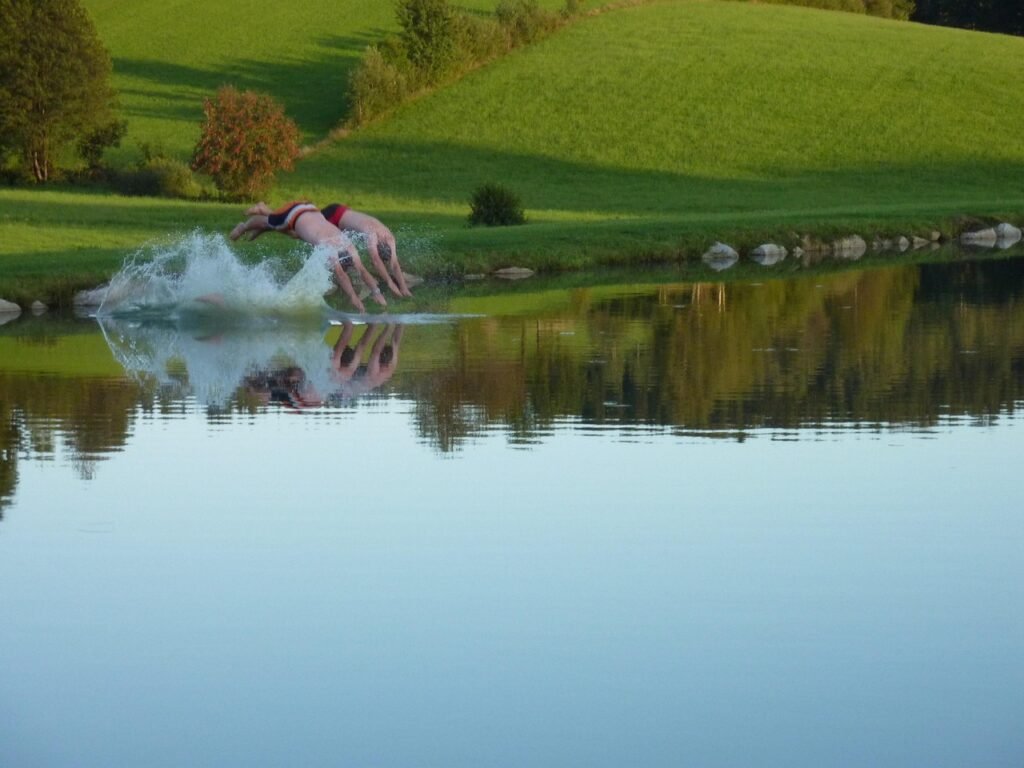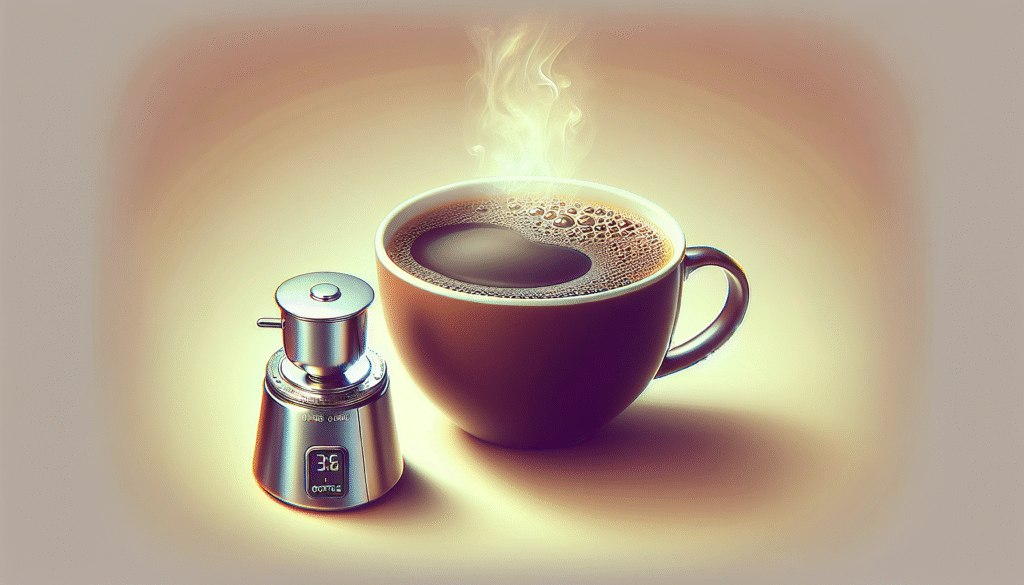Have you ever wondered how long you should truly let something steep, simmer, or sit before it reaches optimal flavor or texture? It’s a question that crosses our minds, whether we’re brewing a cup of coffee, soaking herbs, or cooking pasta. The timing often feels instinctual, yet there’s a fascinating science behind it all. So, let’s unpack the concept of “plunge time” and figure out just how long is long enough.

Understanding Plunge Time
In culinary terms, plunge time often refers to the amount of time ingredients are left in contact with one another, allowing flavors, textures, and aromas to meld. It sounds simple, but factors like temperature, ingredient type, and even personal preference play significant roles.
The Science of Infusion
Infusion is the process where one substance is steeped in another, allowing flavors to mix. Think of how tea leaves release their essence into hot water—there’s a perfect window of time before the leaves become overly bitter.
- Water Temperature: The hotter the water, the quicker the infusion happens. For example, green tea typically requires cooler water than black tea.
- Ingredient Surface Area: When you cut herbs, they release their oils more quickly. Thus, the size and state of your ingredients significantly influence plunge time.
Factors Influencing Optimal Plunge Time
Every ingredient is unique, and understanding these can help you become a better cook or beverage maker.
Type of Ingredient Matters
Different ingredients behave in distinctive ways. Let’s break it down:
| Ingredient Type | Optimal Plunge Time | Key Notes |
|---|---|---|
| Tea Leaves | 2-5 minutes | Varied by type and temperature |
| Coffee Beans | 4-7 minutes | Grind size affects extraction |
| Pasta | 8-12 minutes (al dente) | Also depends on shape and type |
| Herbs (fresh) | 1-5 minutes | Leaves release oils quickly |
| Spices (dried) | 10-30 minutes | Needs longer due to hardness |
Level of Freshness
The freshness of your ingredients can greatly impact flavor and infusion time. Fresh herbs often require less time than dried spices, as they contain more volatile oils. If your herbs are starting to wilt or have been sitting in the fridge for too long, they may yield less flavor.
Temperature Variations
The temperature of your infusion should match the ingredient’s needs. Cold brews, for example, require much longer steep times compared to hot brews. Here’s a breakdown of different temperatures and their effect on plunge times:
| Temperature Range | Recommended Infusion Time | Ideal Use |
|---|---|---|
| Cold (below 70°F) | 12 hours or more | Iced teas or cold brews |
| Warm (160°F-190°F) | 5-8 minutes | Delicate teas |
| Hot (200°F-212°F) | 3-5 minutes | Robust teas and coffee |
Personal Preference
Ultimately, your taste plays the most significant role in determining plunge time. Some people enjoy stronger flavors, while others prefer a milder taste. Experiment with various times to figure out what works best for you.
Common Practices for Different Plunge Times
To help you discern when to time your plunges best, let’s look at specific examples across several categories of food and drink.
Brewing Tea
When brewing tea, you’ll quickly find that timing is essential for extracting the right flavors.
-
Black Tea:
- Plunge Time: 3-5 minutes
- Notes: Stronger flavor with the longer steep, but can become bitter.
-
Green Tea:
- Plunge Time: 2-3 minutes
- Notes: Delicate and prone to bitterness if steeped too long.
-
Herbal Tea:
- Plunge Time: 5-7 minutes
- Notes: Differences in herbal blends can amplify or mute flavors over time.
Making Coffee
Coffee is another area where plunge time matters. Here’s how it goes:
-
French Press:
- Plunge Time: 4 minutes is optimal.
- Notes: If you steep longer, the coffee can acquire a bitter taste.
-
Cold Brew:
- Plunge Time: 12-24 hours.
- Notes: Warmer temperatures can yield quicker results, but patience rewards you with smoother flavors.
Cooking Pasta
Cooking pasta is often a last-minute effort, but timing is crucial to attaining that perfect al dente texture.
-
Standard Pasta:
- Plunge Time: 8-12 minutes, depending on the shape.
-
Fresh Pasta:
- Plunge Time: 2-4 minutes.
- Notes: Fresh pasta cooks significantly quicker.
Infusing Oils and Vinegars
Creating infused oils and vinegars can elevate your cooking, but the time you allow for infusion greatly affects the outcome.
-
Herb-Infused Oil:
- Plunge Time: 1-2 days.
- Notes: This longer infusion allows the essential oils to release fully.
-
Fruit-Infused Vinegar:
- Plunge Time: 1-2 weeks.
- Notes: The longer you infuse the vinegar, the more pronounced the flavor.
The Impact of Time on Texture
Aside from flavor, plunge time can significantly impact the texture of your ingredients. For instance, consider the thickening of sauces or the tenderness of vegetables.
Sauce Reduction
When it comes to sauces, reducing expands flavors by evaporating moisture.
- Reduction Time:
- Plunge Time: 10-30 minutes, depending on the sauce.
- Notes: The longer you boil the sauce, the thicker and richer it becomes, but there’s a fine line between rich and burnt.
Vegetables
The plunge time affects not only cooked vegetables’ textures but also their nutritional value.
- Blanching:
- Plunge Time: 2-5 minutes in boiling water, then immediately transfer to ice water.
- Notes: This method preserves color and texture.

Maintaining Balance in Timing
Timing isn’t just about how long to plunge; it’s also about balancing the flavors and textures with how they interact with other ingredients. For instance, if you’re preparing a dish with multiple components, understanding how one’s timing affects the other is crucial.
Synergy of Ingredients
Consider your dish as a collaboration of elements that bring different attributes to the table.
-
Marinating Proteins:
-
Poultry:
- Plunge Time: 1-6 hours.
- Notes: Longer for tougher cuts to ensure flavor penetration.
-
Fish:
- Plunge Time: 15-30 minutes.
- Notes: Over-marinating can lead to textural issues.
-
-
Stews and Soups:
- Plunge Time: 1-3 hours on low heat.
- Notes: Allowing flavors to meld over time enriches the dish’s overall complexity.
The Human Element of Timing
While science and guidelines offer clarity on plunge time, there’s an organic aspect to it—infusing your own experiences, preferences, and tastes.
Experimentation is Key
Feel empowered to experiment. If you typically steep your tea for three minutes, try it at four and see what changes occur. Record your thoughts, tasting notes, and how those subtle changes affect your experience.
Your Personal Flavor Journey
Remember, your relationship with food and drink is very personal. This journey helps define your palate. Ask yourself how different flavors make you feel, and adjust plunge times based on your experiences and emotional responses.

The Role of Tradition and Culture in Timing
Different cultures have their own practices regarding plunge time, affecting how food and beverages are prepared and enjoyed.
Examples from Around the World
-
Matcha in Japan:
- Rather than steeping, the leaves are ground and whisked, focusing less on time and more on technique.
-
Coffee in Italy:
- The emphasis is on the espresso shot, typically taking 25-30 seconds for optimal extraction.
-
Chai in India:
- Here, steeping spices and tea together can last up to 10-15 minutes, creating a robust drink that’s a hallmark of comfort.
Conclusion: Finding Your Optimal Plunge Time
Ultimately, finding your optimal plunge time is much more about understanding the science and your preferences than sticking to rigid rules. Each cooking method, beverage, and ingredient has its nuances.
As you consider how long is long enough, think about how timing creates flavor, texture, and an overall experience. You have the power to adjust and experiment, leading to culinary triumphs that resonate with your personal taste.
Next time you brew tea, make coffee, or prepare a dish, remember to bring your instincts to the table. Keep learning and adjusting because culinary art is as much about expression as it is about rules. Embrace the plunge—after all, it’s in the timing that you might just discover your next favorite flavor.


